Female Hair Transplant

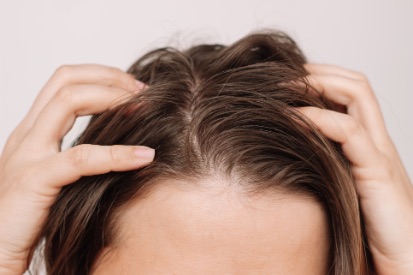

Female Hair Transplant Explained
Female hair loss is often different from the type found in men. Many women experience diffuse hair loss rather than localized hair loss (similar to men) with ample sized donor sites remaining in the back of the scalp. Underlying conditions such as anemia and thyroid problems, which can be temporary and treatable or affect the scalp rather than the hair, must be dealt with before other treatments are recommended.
Benefits of Female Hair Transplant
- Improved Hair Density: A female hair transplant increases hair density in areas affected by thinning or baldness, resulting in a fuller and more voluminous appearance.
- Natural-Looking Results: Transplanted hair follicles follow the natural growth pattern, seamlessly blending with existing hair for a realistic and undetectable outcome.
- Enhanced Self-Confidence: Restoring a fuller head of hair often leads to increased self-esteem and confidence in personal and professional interactions.
- Long-Term Solution: Transplanted hair is resistant to further hair loss, providing a permanent solution to hair thinning and reducing the need for ongoing maintenance or concealment methods.
- Tailored to Female Hair Characteristics: Female hair transplants are customized to address the unique patterns and characteristics of hair loss in women, ensuring optimal results that complement facial features and enhance overall beauty.
How New Horizons Can Help
Female hair transplant Before and After photos
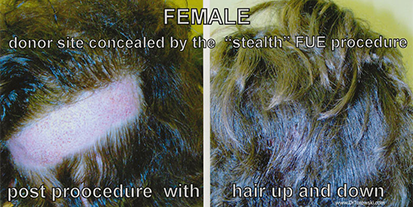
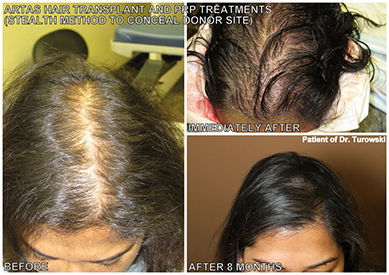
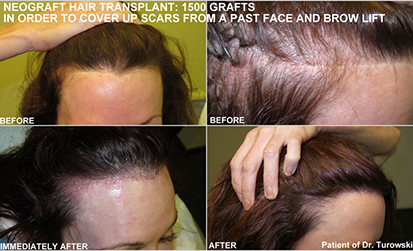
Female Hair Transplant FAQs
For women with localized hair loss, the follicular unit extraction (FUE) procedure may be recommended. Some of the newer technology like the ARTAS® Robotic Hair Restoration or Neograft® Automated Hair Transplantation allow for minimally invasive surgery with very little discomfort and swelling. Although the donor site must be closely shaved, it can be easily concealed using the “stealth” procedure. This allows for the coverage of the donor site until natural hair growth occurs.
Although the donor site must be closely shaved, it can be easily concealed using the “stealth” procedure. This allows for the coverage of the donor site until natural hair growth occurs.
While we attempt to use "stealth" hair transplantation procedures to conceal the surgical area, a larger hair covering may be desired. In cases of more comprehensive or larger hair transplants, we can cover the larger donor site with an extension-based hairpiece that makes these areas undetectable until natural hair is long enough to blend in with the rest of the scalp.
Yes, when performed by skilled professionals, a female hair transplant results in natural-looking hair. The transplanted hair follows the natural growth pattern, ensuring a seamless and authentic appearance.
After the procedure, the transplanted hair typically sheds within the first few weeks, followed by a natural growth cycle. Visible results become apparent over the following months.
While individual healing timelines may vary, most individuals can typically resume regular activities within a week or two after the procedure. It's advisable to avoid strenuous activities and direct sun exposure during the initial weeks to facilitate optimal healing.
Learn About Hair Transplantation

Interested in a Hair Transplant Procedure?
Talk to New Horizons today!
What to Expect at Your Female Hair Transplant Appointment
The duration of the procedure appointment can vary depending on factors such as the chosen technique (e.g., FUE, ARTAS® Robotic Hair Restoration, or Neograft® Automated Hair Transplantation) and the extent of hair loss, but it typically takes several hours. Local anesthesia will be administered to ensure comfort during the transplantation process.
How to Prepare for Female Hair Transplant
Cooperation in adhering to pre-procedure guidelines will contribute to a smooth and successful experience during your female hair transplant.
Planning for Recovery after Female Hair Transplant
Detailed post-operative care instructions will be provided, including guidance on hair washing and any necessary follow-up appointments. While individual healing timelines may vary, most individuals can typically resume regular activities within a week or two after the procedure, with visible results becoming apparent over the following months.
Featured Blogs
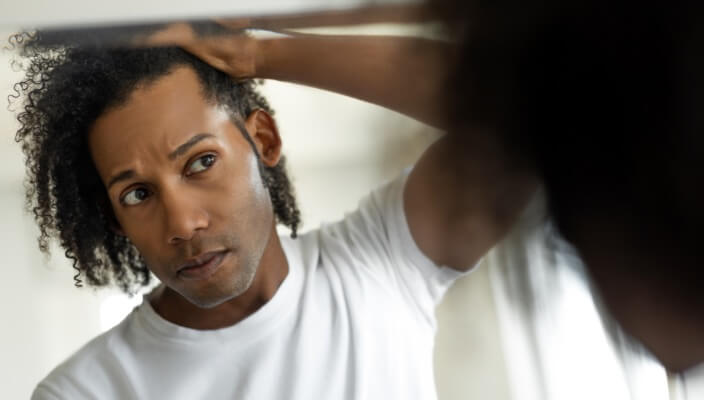
- Cosmetic Treatments
- Plastic Surgery
Unravel the mystery behind post-COVID hair loss as we explore the causes, duration, and potential solutions to help you regain your hair's vibrancy.
Read More
- Cosmetic Treatments
- Plastic Surgery
Explore the benefits of ARTAS® and NeoGraft™ hair restoration techniques, guiding you towards the ideal choice for achieving natural-looking results and renewed confidence.
Read MoreFeatured Products
Check your local office for current stock!
Check your local office for current stock!
